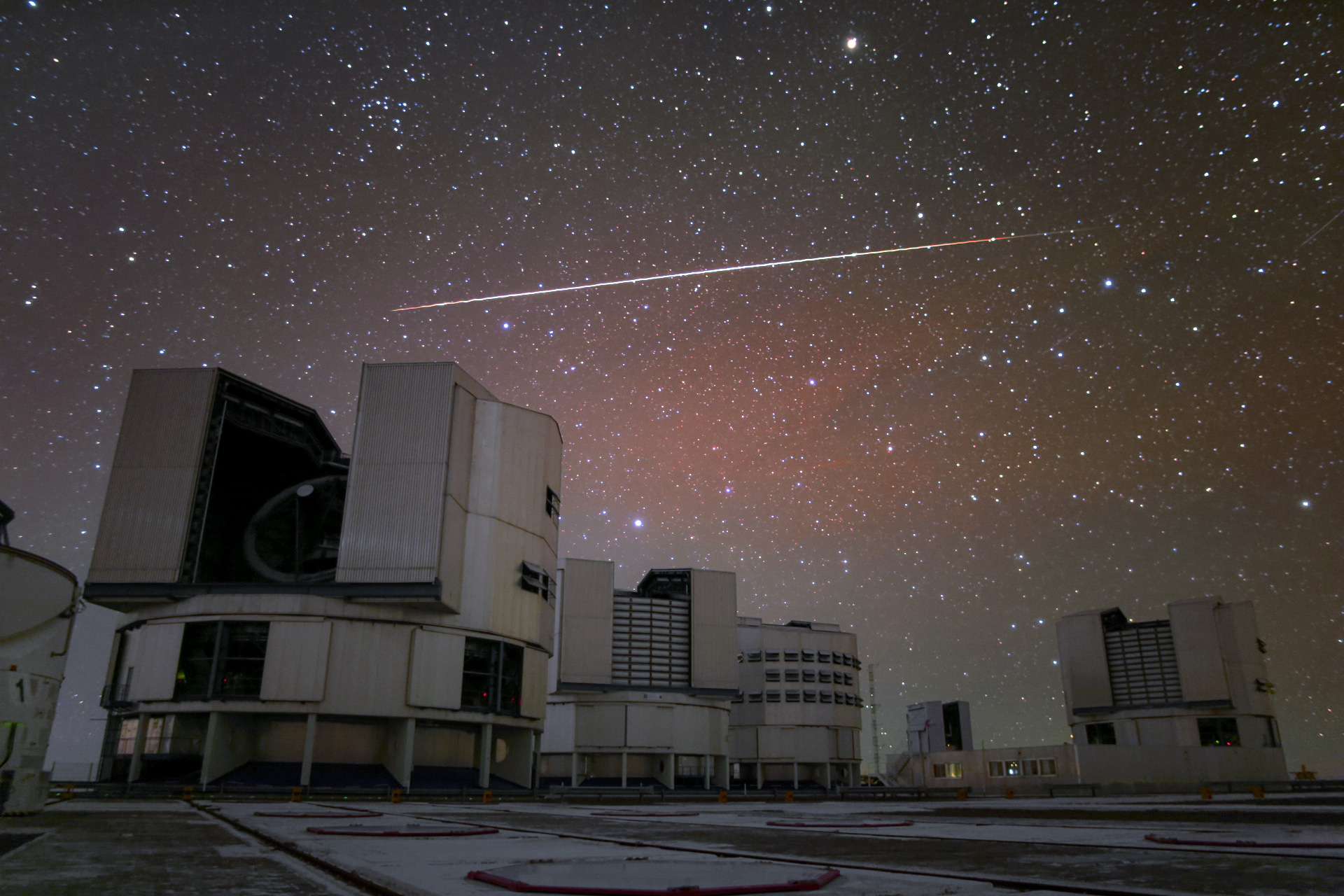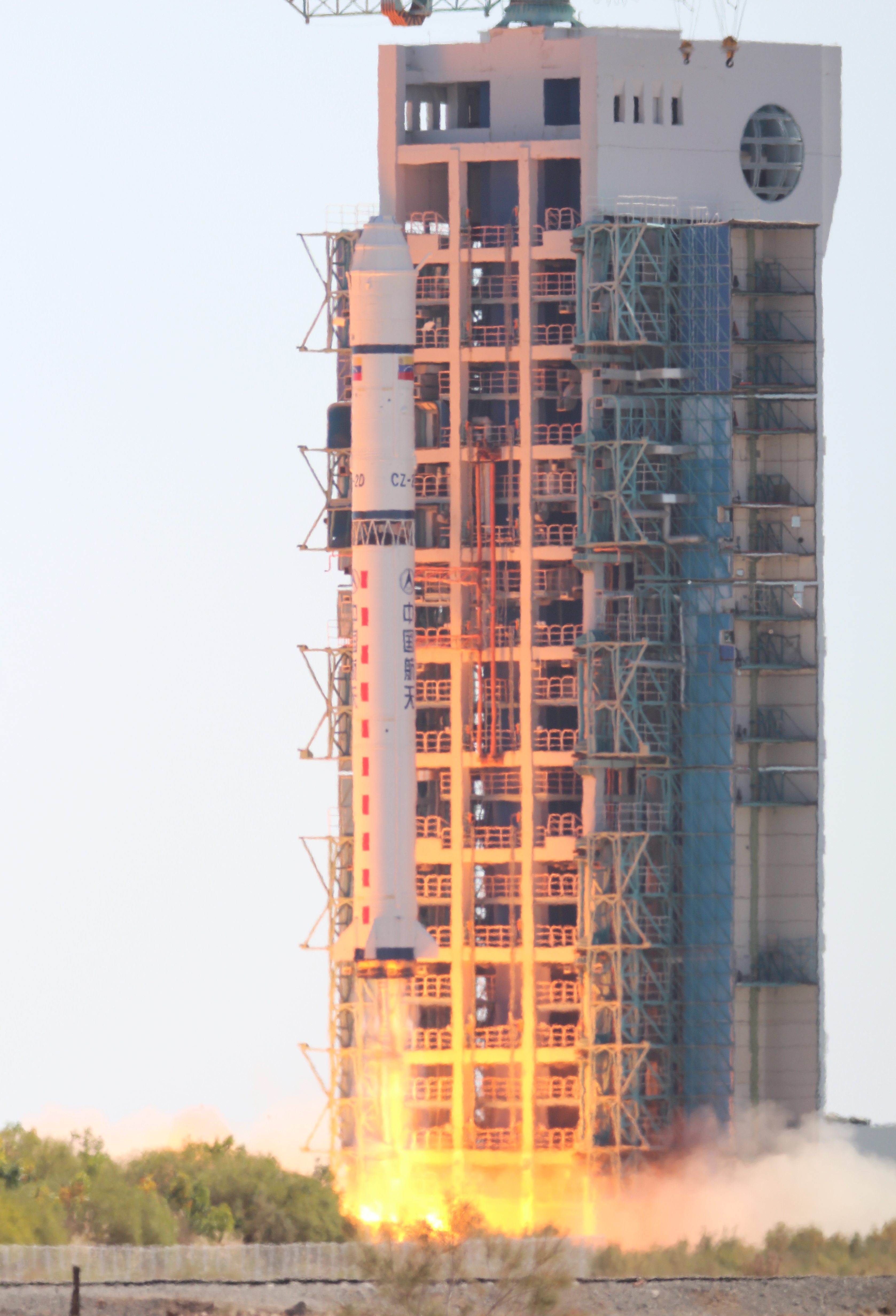|
Satellogic
Satellogic is a company specializing in Earth-observation satellites, founded in 2010 by Emiliano Kargieman and Gerardo Richarte. Satellogic began launching their Aleph-1 constellation of ÑuSat satellites in May 2016. On 19 December 2019, Satellogic announced they have received US$50 million in funding in the latest funding round. In January 2022 the company went public with a special-purpose acquisition company (CF Acquisition Corp. V) merger. Satellogic is a publicly traded company on the Nasdaq exchange. History In the summer of 2010, after spending some time at the Ames Research Center in Mountain View, California, Emiliano Kargieman started developing the concepts that would become Satellogic. He realized there was a great opportunity: to bring to the satellite services industry many of the lessons learned during the last two decades of working with Information Technology, and build a platform that provides spatial information services, without major investments in inf ... [...More Info...] [...Related Items...] OR: [Wikipedia] [Google] [Baidu] |
Satellogic
Satellogic is a company specializing in Earth-observation satellites, founded in 2010 by Emiliano Kargieman and Gerardo Richarte. Satellogic began launching their Aleph-1 constellation of ÑuSat satellites in May 2016. On 19 December 2019, Satellogic announced they have received US$50 million in funding in the latest funding round. In January 2022 the company went public with a special-purpose acquisition company (CF Acquisition Corp. V) merger. Satellogic is a publicly traded company on the Nasdaq exchange. History In the summer of 2010, after spending some time at the Ames Research Center in Mountain View, California, Emiliano Kargieman started developing the concepts that would become Satellogic. He realized there was a great opportunity: to bring to the satellite services industry many of the lessons learned during the last two decades of working with Information Technology, and build a platform that provides spatial information services, without major investments in inf ... [...More Info...] [...Related Items...] OR: [Wikipedia] [Google] [Baidu] |
ÑuSat
ÑuSat satellite series ( es, ÑuSat, sometimes translated into English as NewSat), is a series of Argentinean commercial Earth observation satellites. They form the Aleph-1 constellation, which is designed, built and operated by Satellogic. Overview Satellites design The satellites in the constellation are identical 51 × 57 × 82 cm spacecraft of mass. The satellites are equipped with an imaging system operating in visible light and infrared. The constellation will allow for commercially available real-time Earth imaging and video with a ground resolution of . The satellites were developed based on the experience gained on the BugSat 1 (Tita) prototype satellite. BugSat 1 The BugSat 1 (nickname Tita, COSPAR 2014-033E) was a technology demonstration mission for the ÑuSat satellites. It was launched on 19 June 2014 by a Russian Dnepr rocket. It was a microsatellite weighing 22 kg with outer dimensions of 27.5 × 50 × 50 cm. It also carried amateur radi ... [...More Info...] [...Related Items...] OR: [Wikipedia] [Google] [Baidu] |
Mountain View, California
Mountain View is a city in Santa Clara County, California, United States. Named for its views of the Santa Cruz Mountains, it has a population of 82,376. Mountain View was integral to the early history and growth of Silicon Valley, and is the location of many high technology companies. In 1956, William Shockley established Shockley Semiconductor Laboratory in Mountain View, the first company to develop silicon semiconductor devices in Silicon Valley. Today, Mountain View houses the headquarters of many of the world's largest technology companies, including Google and Alphabet Inc., Unicode Consortium, Intuit, NASA Ames research center, and major headquarter offices for Microsoft, NortonLifeLock, Symantec, 23andMe, LinkedIn, Samsung, and Synopsys. History The Mexican land grant of Rancho Pastoria de las Borregas was given in 1842 by Alta California Governor Juan Bautista Alvarado, Juan Alvarado to Francisco Estrada. This grant was later passed on to Mariano Castro, who sold ... [...More Info...] [...Related Items...] OR: [Wikipedia] [Google] [Baidu] |
Satellite Constellation
A satellite constellation is a group of artificial satellites working together as a system. Unlike a single satellite, a constellation can provide permanent global or near-global coverage, such that at any time everywhere on Earth at least one satellite is visible. Satellites are typically placed in sets of complementary orbital planes and connect to globally distributed ground stations. They may also use inter-satellite communication. Other satellite groups Satellite constellations should not be confused with: * ''satellite clusters'', which are groups of satellites moving very close together in almost identical orbits (see satellite formation flying); * '' satellite series'' or ''satellite programs'' (such as Landsat), which are generations of satellites launched in succession; * ''satellite fleets'', which are groups of satellites from the same manufacturer or operator that function independently from each other (not as a system). Overview Satellites in Medium Earth orbi ... [...More Info...] [...Related Items...] OR: [Wikipedia] [Google] [Baidu] |
Hyperspectral Imaging
Hyperspectral imaging collects and processes information from across the electromagnetic spectrum. The goal of hyperspectral imaging is to obtain the spectrum for each pixel in the image of a scene, with the purpose of finding objects, identifying materials, or detecting processes. There are three general branches of spectral imagers. There are push broom scanners and the related whisk broom scanners (spatial scanning), which read images over time, band sequential scanners (spectral scanning), which acquire images of an area at different wavelengths, and snapshot hyperspectral imaging, which uses a staring array to generate an image in an instant. Whereas the human eye sees color of visible light in mostly three bands (long wavelengths - perceived as red, medium wavelengths - perceived as green, and short wavelengths - perceived as blue), spectral imaging divides the spectrum into many more bands. This technique of dividing images into bands can be extended beyond the visible. ... [...More Info...] [...Related Items...] OR: [Wikipedia] [Google] [Baidu] |
Multispectral Imaging
Multispectral imaging captures image data within specific wavelength ranges across the electromagnetic spectrum. The wavelengths may be separated by filters or detected with the use of instruments that are sensitive to particular wavelengths, including light from frequencies beyond the visible light range, i.e. infrared and ultra-violet. It can allow extraction of additional information the human eye fails to capture with its visible receptors for red, green and blue. It was originally developed for military target identification and reconnaissance. Early space-based imaging platforms incorporated multispectral imaging technology to map details of the Earth related to coastal boundaries, vegetation, and landforms. Multispectral imaging has also found use in document and painting analysis. Multispectral imaging measures light in a small number (typically 3 to 15) of spectral bands. Hyperspectral imaging is a special case of spectral imaging where often hundreds of contiguous ... [...More Info...] [...Related Items...] OR: [Wikipedia] [Google] [Baidu] |
Earth Observation
Earth observation (EO) is the gathering of information about the physical, chemical, and biological systems of the planet Earth. It can be performed via remote-sensing technologies (Earth observation satellites) or through direct-contact sensors in ground-based or airborne platforms (such as weather stations and weather balloons, for example). According to the Group on Earth Observations (GEO), the concept encompasses both " space-based or remotely-sensed data, as well as ground-based or in situ data". Earth observation is used to monitor and assess the status of and changes in natural and built environments. Terminology In Europe, ''Earth observation'' has often been used to refer to satellite-based remote sensing, but the term is also used to refer to any form of observations of the Earth system, including in situ and airborne observations, for example. The GEO, which has over 100 member countries and over 100 participating organizations, uses EO in this broader sense. In t ... [...More Info...] [...Related Items...] OR: [Wikipedia] [Google] [Baidu] |
Satellite Constellation
A satellite constellation is a group of artificial satellites working together as a system. Unlike a single satellite, a constellation can provide permanent global or near-global coverage, such that at any time everywhere on Earth at least one satellite is visible. Satellites are typically placed in sets of complementary orbital planes and connect to globally distributed ground stations. They may also use inter-satellite communication. Other satellite groups Satellite constellations should not be confused with: * ''satellite clusters'', which are groups of satellites moving very close together in almost identical orbits (see satellite formation flying); * '' satellite series'' or ''satellite programs'' (such as Landsat), which are generations of satellites launched in succession; * ''satellite fleets'', which are groups of satellites from the same manufacturer or operator that function independently from each other (not as a system). Overview Satellites in Medium Earth orbi ... [...More Info...] [...Related Items...] OR: [Wikipedia] [Google] [Baidu] |
Dnepr (rocket)
The Dnepr rocket (russian: Днепр, translit=Dnepr; uk, Дніпро, translit=Dnipró) was a space launch vehicle named after the Dnieper River. It was a converted ICBM used for launching artificial satellites into orbit, operated by launch service provider ISC Kosmotras. The first launch, on April 21, 1999, successfully placed UoSAT-12, a 350 kg demonstration mini-satellite, into a 650 km circular Low Earth orbit. History The Dnepr was based on the R-36 (missile), R-36MUTTH Intercontinental ballistic missile (ICBM)called the ''SS-18 Satan'' by NATOdesigned in the 1970s by the Yuzhnoe Design Bureau in Dnepropetrovsk, Ukrainian SSR. The Dnepr control system was developed and produced by the Khartron, JSC "Khartron", Kharkiv. The Dnepr was a multistage rocket, three-stage rocket using storable hypergolic liquid propellants. The launch vehicles used for satellite launches have been withdrawn from ballistic missile service with the Russian Strategic Rocket Forces a ... [...More Info...] [...Related Items...] OR: [Wikipedia] [Google] [Baidu] |
Launch Vehicle
A launch vehicle or carrier rocket is a rocket designed to carry a payload (spacecraft or satellites) from the Earth's surface to outer space. Most launch vehicles operate from a launch pad, launch pads, supported by a missile launch control center, launch control center and systems such as vehicle assembly and fueling. Launch vehicles are engineered with advanced aerodynamics and technologies, which contribute to large operating costs. An orbital spaceflight, orbital launch vehicle must lift its payload at least to the boundary of space, approximately and accelerate it to a horizontal velocity of at least . Suborbital spaceflight, Suborbital vehicles launch their payloads to lower velocity or are launched at elevation angles greater than horizontal. Practical orbital launch vehicles are multistage rockets which use chemical propellants such as Solid-propellant rocket, solid fuel, liquid hydrogen, kerosene, liquid oxygen, or Hypergolic propellants. Launch vehicles are cla ... [...More Info...] [...Related Items...] OR: [Wikipedia] [Google] [Baidu] |
Long March 2D
The Long March 2D (), also known as the Chang Zheng 2D, CZ-2D and LM-2D, is a Chinese two-stage orbital carrier rocket mainly used for launching LEO and SSO satellites. It is manufactured by the Shanghai Academy of Spaceflight Technology (SAST). It is mainly launched from areas LA-2B and LA-4 at the Jiuquan Satellite Launch Center. The Long March 2D made its maiden flight on 9 August 1992. It was initially used to launch FSW-2 and FSW-3 reconnaissance satellites. Unlike all other members of the Long March 2 rocket family, the Long March 2D is a two-stage version of the Long March 4 The Long March rockets are a family of expendable launch system rockets operated by the China Aerospace Science and Technology Corporation. The rockets are named after the Chinese Red Army's 1934–35 Long March military retreat during the Ch ... launch vehicle. Launch statistics List of launches The Long March 2D made its maiden flight on 9 August 1992. References Exter ... [...More Info...] [...Related Items...] OR: [Wikipedia] [Google] [Baidu] |







